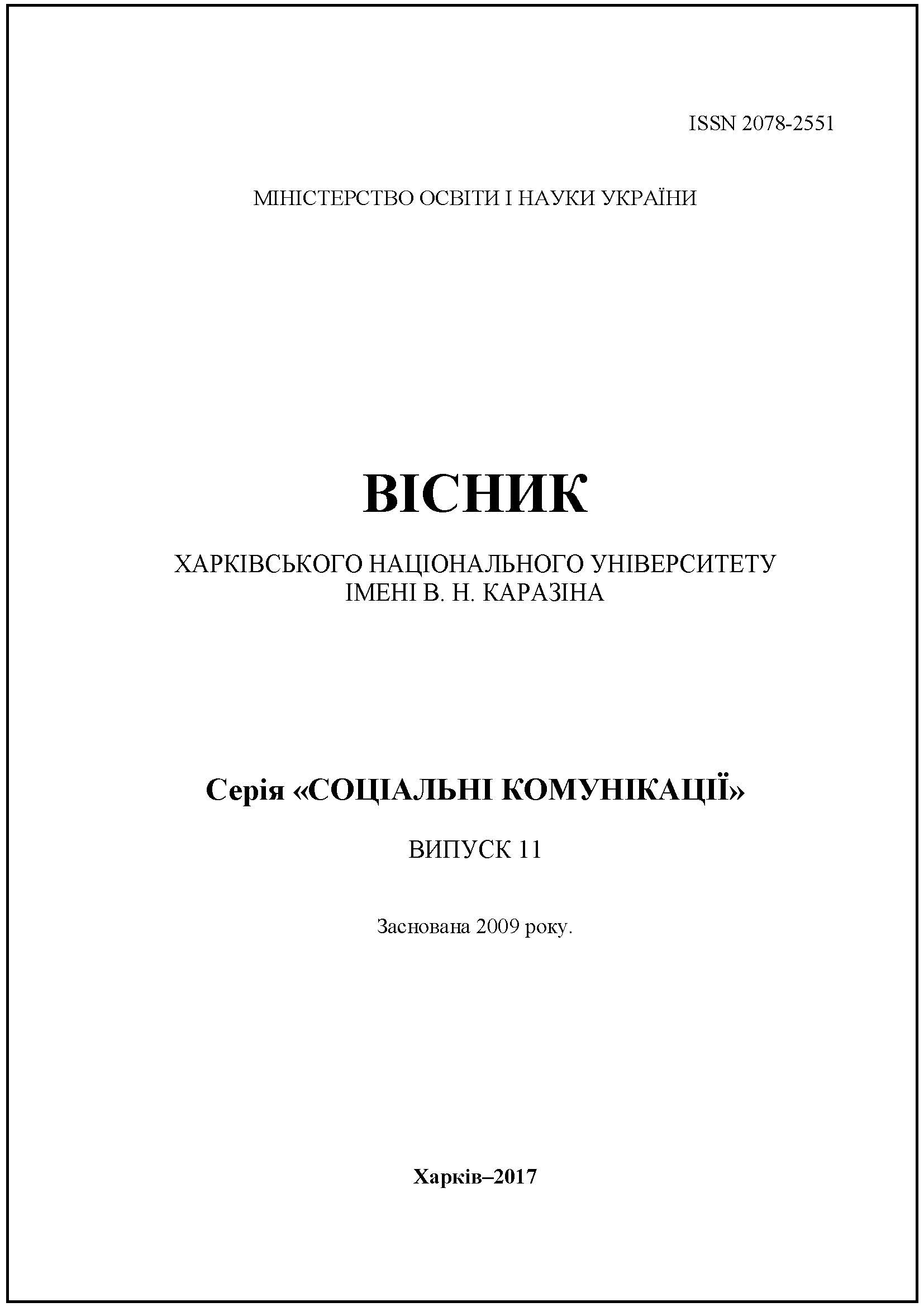Innovative virus technologies in modern online-network wars
Abstract
The article presents the problem of the research of media viruses’ technologies in the context of their use in modern information wars. The said technology is quite new, specific and narrow-profile, which conditioned the fact that it is practically not investigated from the point of view of science. The author of this technology is D. Roskhoff, an American media expert, who proposed this name and explored the practical aspects of the functioning of media viruses. Also, certain developments in this direction were carried out by T. Leary, who, in particular, researched the nature of media activism. Media viruses, as a technology for implementing instantaneous mass influences on the audience, have received special significance in social networks. In particular, a special resonance, at one time received a network project called «Blue Whale» or «Warm House», which led to a large number of adolescents suicide. Understanding the great resonance and the possibility of using, as information weapons, the technology of media viruses was adopted by specialists in information wars. A significant impetus to the development of media-viral technologies was received in the framework of the Russian-Ukrainian information confrontation, to which virtually all the leading countries of the world joined. In the format of this confrontation, memes, lols and media activism were accompanied by the most important and resonant events in the real world, serving as a kind of media support. At the moment, we can highlight such components of media viruses’ technology, such as memes, gifs, lols and mediaactivism.
Downloads
References
2. Лебедева И. Меметическое оружие, или Вашингтонский демократизационный шаблон [Электронный ресурс] / Ирина Лебедева // Фонд стратегической культуры : [сайт]. — Режим доступа : https://www.fondsk.ru/news/2011/12/10/memeticheskoe-oruzhie-ili-vashingtonskij-demokratizacionnyj-shablon-11775.html.
3. Мусалиева Г. Группы смерти (18+) [Электронный ресурс] / Галина Мусалиева // Новая газета : [сайт]. — Режим доступа : https://www.novayagazeta.ru/articles/2016/05/16/68604-gruppy-smerti-18.
4. Овчинников Ф. Как создать медиа-вирус [Электронный ресурс] / Федор Овчинников // Сила ума : [сайт]. — Режим доступа : http://sila-uma.ru/2014/07/24/media-virus/.
5. Пашинская А. Группы смерти и Синие киты. Как в соцсетях из детей делают самоубийц [Электронный ресурс] / Анастасия Пашинская // Espreso.TV : [сайт]. — Режим доступа : https://ru.espreso.tv/article/2017/02/24/synyy_kyt.
6. Рашкофф Д. Медиавирус. Как поп-культура тайно воздействует на ваше сознание / Д. Рашкофф ; [пер. с англ. Д. Борисова]. — М. : Ультра.Культура, 2003. — 368 с.
7. Рашкофф Д. Вступление. Характер заражения [Электронный ресурс] / Дуглас Рашкофф // Медиавирус : [сайт]. — Режим доступа : http://mediavirus.narod.ru/02.html.
8. Шардаков Д. Скрытый вирусный маркетинг: примеры, или как создать медиа-вирус [Электронный ресурс] / Даниил Шардаков // Shard-Copywriting.Ru : [сайт]. — Режим доступа : http://shard-copywriting.ru/copywriting-secrets/skryityiy-i-virusnyiy-marketing-primeryi-ili-kak-sozdat-mediavirus.
9. LOL [Электронный ресурс] Cambridge dictionary [сайт]. — Режим доступа : https://dictionary.cambridge.org/ru/%D1%81%D0%BB%D0%BE%D0%B2%D0%B0%D1%80%D1%8C/%D0%B0%D0%BD%D0%B3%D0%BB%D0%B8%D0%B9%D1%81%D0%BA%D0%B8%D0%B9-%D0%B4%D0%BB%D1%8F-%D1%83%D1%87%D0%B0%D1%89%D0%B8%D1%85%D1%81%D1%8F/lol.




